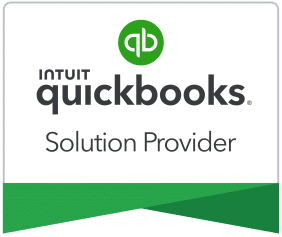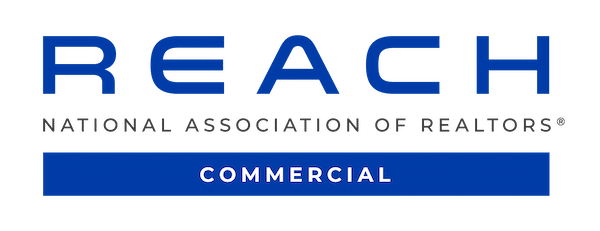I’ve been fortunate to serve on several family investment boards and work with family members and their investment committees. In this article, we will explore generational shifts in commercial real estate and discuss working with an ever-changing group of family members who have inherited real estate assets as a member of a long-term investment partnership.
Imagine
Imagine this, your parents are in their late 70s, and their parents have purchased commercial real estate investments that the family still owns in a family trust. The current senior members of the trust have been involved with these investments for over 30 years and have had the opportunity to build a significant multimillion-dollar portfolio. The object of this portfolio is to build a nest egg for the family. The family is building this portfolio to generate income for future generations in case there is an economic depression.
In every generation, many family members have children, so trust gets watered down. More importantly, it’s challenging to find a leader with the experience to successfully lead this group of people to the promised land and handle the generational shift in commercial real estate.
Well, not to the promised land, but to positive returns on their real estate investments. The older leadership group tends to be conservative and is focused on 50% leverage. In other words, they don’t borrow more than 50% to purchase an investment so that the properties can resist an economic downturn.
If partners want to exit the trust, they’ve got to figure out how to raise the cash, or somebody must raise the cash to either buy real estate or buy out the partner.
This has happened in the past and can slow down the growth of the partnership while cash flow reserves need to be rebuilt.
Partners Don’t Agree
This brings us to the heart of our conversation, which is what happens if the family members of this real estate partnership don’t agree. There are a lot of scenarios where interfamilial conflict can destroy a long-term vision that could benefit family members.
Remember the purpose of this trust is to build up the real estate nest egg that then generates cash flow to the partners to help them pay for college for their kids, buy a new house, buy a boat, get through depression or invest without being in the family partnership.
The biggest challenge is building a structure that keeps the family members from getting angry with each other and killing the goose that laid the golden egg.
Draft A Vision And Define The Rules Of The Road
The first step in business is to draft a family vision so everybody’s on the same page. There are age-related issues to consider, such as when a family member is ready, meaning mature or experienced enough, to be a leader. All family members should receive training to make informed decisions regarding the future of the family partnership. It takes a significant amount of training to manage people, and a leader needs to understand how real estate works, and finally, you need to have time to be able to study each decision process. In most cases, many of the family members don’t want the responsibility for making decisions.
As you develop real estate assets, partners should manage lease negotiations, purchase and sell investments, and refinance properties. A skilled attorney can be beneficial, but there’s no guarantee that their solutions will satisfy all partners. That is why competent leadership is critical.
Generational Shifts in Commercial Real Estate – Who Is In Charge
One of the biggest challenges when working with a group of family members is whether non-bloodline family members should have a vote. In other words, are those people who are the wives and husbands of family members allowed a voice or a vote?
There is no right answer, though many folks lean towards direct bloodline control. Non-bloodline members can often be the most effective leaders, as they may unite the group without a direct vested interest. This perspective helps them effectively manage jealousy and conflicts.
It is also possible that the family has a member with a mental or physical illness that can disrupt the partnership. In addition, all the members of a family partnership have different economic positions. Some are wealthy, some are less well-off, some have income, some don’t, and all those issues tend to drive their motivation when decisions are made.
Feelings Have To Be Accounted for In the Generational Shifts in Commercial Real Estate
Inevitably somebody will hurt somebody else’s feelings. To fix that, and yes it needs to be fixed, takes some finesse.
It starts with the ability to listen. Listening is a skill that is unfortunately highly underrated, but it is critical to the success of any business or family partnership.
- Listening in a non-judgmental way is the first step on this road to success.
- Then one needs to acknowledge an offense and sensitively find a way to express remorse for the false step.
- Next, it helps to explain what you may have said the negative thing and finally,
- Finally, you need to sincerely express your intention to fix the misstep and prevent it from happening again.
Remember, this occurs after there has been some infighting. Accusations have been thrown around, maybe even some yelling has occurred. Infighting often arises when the key person managing the family partnership becomes incapacitated or passes away. The new leader has not been chosen or is a weak leader.
Rules Of The Road
That is why the rules of the road must be written and agreed upon before any generational shifts occur. Consider this:
When your parents started investing, they had three kids, and it was simple to split things up in three ways. Then each of those kids had three kids. Now, the partnership has twelve beneficiaries, and everyone wants a seat at the table. As you can imagine, that turns into a mess.
There are many ways to resolve this. If the investments are under $10 million, the family can manage them themselves. When investments exceed $100,000,000, consider hiring an asset manager or having a family member take on a key management role. (These are general guidelines.)
The key to a successful organization is a written set of rules and training. The key person will be more successful with a background in finance, real estate, and people management.
They must also create a transparent reporting process for all group members to understand decisions. Any buy-sell decisions would typically be voted on by the group as a whole, and a majority of the members would need to vote in favor.
Once everybody understands the rules, the next step is to train everybody on how property decisions can be made. This starts with technical knowledge like financial and legal analysis, followed by building structure and lease analysis. Once everybody has a baseline knowledge, decisions will be easier to make.
Summary
The loudest voice can work to get everyone’s attention, but it’s not an effective way to make a decision. Work with your advisors (e.g., CPAs, Attorneys, etc.) to establish a transparent process for transitioning leaders’ age.
Maintaining family unity outside of business relationships can be achieved by organizing non-real estate-related events for all family members. Here, they can come together and appreciate one another, where business is not the main point of the gathering. Contemplate annual charitable giving to honor the trust’s founders. Finally, develop a fair, non-divisive, and thoughtful way to hand off leadership from one generation to another. In that way, you can avoid family infighting and create a long-term harmonious partnership.








